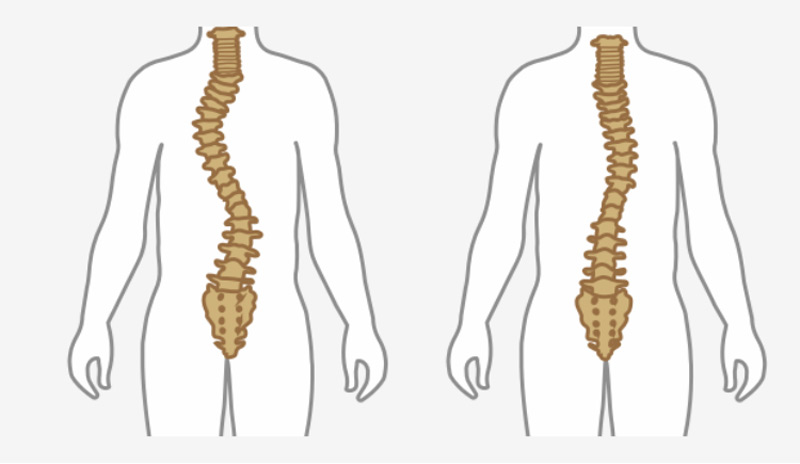Doctors generally divide the causes of scoliosis into four categories:
- Idiopathic (unknown cause) is the most common type of scoliosis
- Congenital (at birth)
- Neuromuscular (such as cerebral palsy or muscular dystrophy)
- Injuries to, previous surgery on, or infections of the spine
Another category is degenerative scoliosis. As you get older, your bones undergo degenerative changes that are part of the natural aging process. When joints deteriorate, arthritis or osteoporosis can develop, and the spinal column can shift sideways.
Risk Factors
-
- Symptoms typically begin during the growth spurt that occurs just prior to puberty.
- Females are more likely to develop scoliosis than males.
- Scoliosis can run in families, but most children with scoliosis don’t have a family history of the disease.
Symptoms
Scoliosis happens along a spectrum, from mild to moderate to severe.
In teenagers and young adults with scoliosis, there’s typically no symptom of pain, only structural differences in the body. However, in adults with scoliosis, particularly those whose scoliosis developed due to degeneration of the spine, there may be some pain and discomfort. Here are some of the more common signs of scoliosis:
- Uneven shoulder blades, shoulders, arms, rib cages, or hips
- One shoulder blade that sticks out more than the other
- The body may appear to be leaning to one side
- The head may not seem like it is centered right above the pelvis
- Problems breathing due to reduced space in the chest for lungs to expand (rare)
When pain does occur, a pinched nerve is typically the cause, leading to:
- Numbness or weakness in the legs or feet
- Shooting pain down the leg (sciatica)
- Walking or posture abnormalities
- Changes in bowel and bladder habits
Symptoms of severe, progressive scoliosis are similar to those of stenosis, but with visible spinal imbalance. This imbalance can result in strain on the hips and knees, the inability to walk a straight line, and falls.

